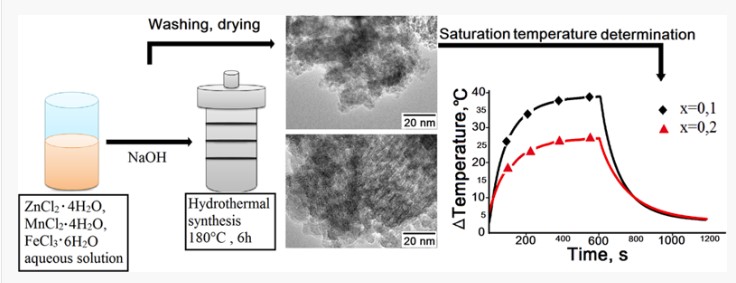Авторы: , , Кривошапкина Е.Ф., Каштанов E.А., Гимаев Р.Р., Зверев В.И., Кривошапкин П.В.

Abstract:
Nowadays, one of the most important global goals in medicine is to find ways to control cancer. Magnetic fluid hyperthermia is a promising method for cancer treatment due to its localized influence and low damage to healthy tissue. Ferrite nanoparticles are widely used in this cancer modality because of their low Curie temperature, biocompatibility, and production simplicity. In this work, (Mn(1−x)Znx)Fe2O4 sol was obtained by hydrothermal synthesis from chlorides of zinc, manganese, and iron (III) at 180 °C for x = 0.1 and x = 0.2. The results of dynamic light scattering analysis have shown that the average hydrodynamic diameter of nanoparticles in the sol is about 70 nm. According to scanning electron microscopy (SEM) and high-resolution transmission electron microscopy (HRTEM), the powdered nanoparticles are spherical with a high degree of crystallinity. X-ray powder diffraction analysis (XRD) has confirmed single-phase formation in samples. The magnetic properties measured have indicated that the nanoparticles have reached temperatures close to the range required for deactivation of cancer cells under the influence of a variable magnetic field.
Keywords:
Manganese–zinc ferrite nanoparticles Hydrothermal synthesis Magnetic fluid hyperthermia Low Curie temperature Cancer treatment
DOI: https://doi.org/10.1007/s10971-020-05237-8
Read full text: https://link.springer.com/article/10.1007%2Fs10971-020-05237-8